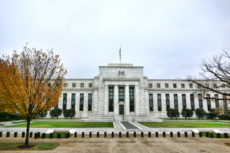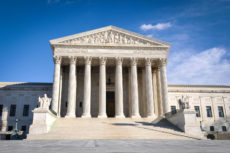Those looking for an inspiring story of entrepreneurship won’t find one in The Founder, the new biopic depicting Ray Kroc’s dogged pursuit of building the McDonald’s Corp into an iconic brand and food-industry juggernaut. According to the screenwriter and story told on the big screen, little joy comes from the Golden Arches as Kroc reneges on deals and stabs his partners (business and family) in the back to seize control of the conglomerate in a quest for greatness.
The biopic chronicles how Midwestern salesman Ray Kroc (Michael Keaton, Beetlejuice, Birdman) stumbled onto a rough gem in the fast-food business in the L.A. backwater of San Bernardino in the 1950s. Richard McDonald (Nick Offerman, Parks and Recreation) and Maurice “Mac” McDonald (John Carroll Lynch, Fargo, Drew Carey Show) discovered an untapped niche in the fast-food fad of the 1940s and 1950s: quick, reliable, high-quality alternatives for families on a budget who want to bypass the disorderly, dirty, and teenager-infested drive-in restaurants. The McDonald brothers had tried several different food businesses, none successful, until Dick McDonald re-engineered the kitchen to provide a high-quality hamburger quickly with a limited menu. Both brothers were committed to high standards for their food and their establishment. And families flocked to their stores.
Kroc, depicted in the film as a ne’er-do-well traveling salesman, was inspired by the staggering flow of customers outside their store, plus the savvy marketing ideas encapsulated in images of the then unknown but now world-famous Golden Arches. He saw the potential to build McDonald’s into a global brand that emphasizes high-quality food, a relentless focus on order and cleanliness, and a family-friendly atmosphere. The only problem was that the brothers had already tried to franchise their store and pulled the plug because they couldn’t control quality. Nevertheless, Kroc convinces them it’s worth another shot, essentially giving the brothers complete control over the design of the stores and the quality of the food produced. Kroc would handle the financing and national franchising.
Kroc, however, finds that franchising is a lot harder than he had hoped. He convinces his rich country-club friends to invest, but they are absentee store owners and fail to maintain the exacting standards for store and food quality. He then recruits husband-wife teams, betting correctly that they would buy into the image and brand of McDonald’s as a family-oriented business and keep their stores clean and friendly as on-site owners. He finds, however, that he has signed away too much control over to the McDonald brothers. In fact, Kroc finds that his payments to the McDonald brothers essentially eliminate any profit, jeopardizing the company’s financial success. The brothers refuse to change their contract, and Kroc starts searching for workarounds. He meets Harry Sonneborn (B.J. Novak, The Office), who advises him to invest in land, rather than stores, a move that breaks the spirit if not the letter of his contract with the brothers, but drives the tremendous financial success of the corporation.
Many viewers will come away from the film believing that Ray Kroc was a double-dealing, ruthless businessman even though screenwriter Robert D. Siegel (also editor of the satirical news site The Onion) reportedly wrote the screenplay based on Kroc’s autobiography and another unauthorized biography. Viewers may also come away with the impression that Kroc’s brutal approach to business was inevitable; Kroc couldn’t have been successful without exploiting the McDonald brothers, who are portrayed as sympathetic innovators whose name and ideas were stolen from them.
Yet, the McDonald brothers were as uncompromising in their approach to business as Kroc was to his vision for expansion. The story unfolds as a conflict between two unbending forces: the McDonald brothers’ intent on preserving their vision of their business—even if it meant staying in one store—and Kroc’s vision for disrupting the entire food industry. Each side was iconoclastic in its own ways. Kroc ended up as the more agile entrepreneur, pivoting his business model in a way to successfully scale the enterprise and monetize his vision by building a global brand. Kroc, rather than the McDonald brothers, ended up becoming the “disrupter” of this generation.
Nevertheless, the producers and screenwriter of The Founder have crafted a story that illustrates fundamental differences between entrepreneurship and invention, and the implications for wealth creation. Wealth is created when an invention is scaled and monetized through the market. Consumers monetize the value of the product (or service) by validating its value through payments in the marketplace—the win-win of trade. Invention is not enough to create social value and capital. Scaling inventions so that society can access their benefits is what disrupts the marketplace and generates industry-wide (as well as social) change. The McDonald brothers were the inventors, and profited from their invention at their first store and the ones they tried to franchise. But their skills and talents were not in building a brand or in franchising their concept in a scalable form.
In Competition & Entrepreneurship (chapter 2), economist Israel Kirzner discusses the difference between a businessman and an entrepreneur. The businessman (or woman) is focused solely on making profits, while the entrepreneur is looking for new opportunities and invests capital in products or services that are different from what the economy already provides. Entrepreneurs use tacit knowledge—unarticulated knowledge from experience, intuition, etc.—to identify these opportunities. The Founder provides an excellent cinematic example of how these concepts differentiate entrepreneurs from conventional businessmen, as well as variations in talents among entrepreneurs. (See also Randall G. Holcombe’s excellent survey in Entrepreneurship and Economic Progress.)
The Founder, however, is not just another anti-capitalist film. The storyline is actually conflicting, and substantial evidence suggests that Kroc was ruthless in enforcing his contracts (even as he stretched the ones with the McDonald brothers). But McDonald’s under Kroc also fulfilled much of the McDonald brothers’ vision. The company is known for its strict adherence to quality and health standards (at least at their stores). Their employee- and management-training program is known for its rigor and upward mobility. (Notably, the company has one of the best records of recruiting and advancing minorities and woman as store franchisees and managers.)
The Founder is Michael Keaton’s movie, likely intended as a vehicle to the Oscars. Keaton does a fine job of conveying Kroc’s vision and the pressures to compromise on business ethics while staying true to a larger vision of higher quality. At one point, for example, Kroc wants to cut down on refrigeration costs by adding a powder substitute for liquid milk in the milkshakes. The McDonald brothers refuse. This propels Kroc to find ways to exploit weaknesses in the contract and ultimately strong-arm the brothers into relinquishing ownership and control. Other actors provide excellent portrayals of the McDonald brothers (Offerman and Lynch), Kroc’s first wife Ethel (Laura Dern), Kroc’s second wife (third in real life) Joan (Linda Cardellini), and a series of advisers to Kroc as he navigates the challenging world of franchise fast food.
The Founder is a solid movie, but it falls short of a great one. Director John L. Hancock (The Rookie, The Blind Side) keeps the pace moving by steadily ramping up the tension between the McDonald brothers and Kroc, while Seigel’s screenplay effectively shows the subtle corruption implied in the film’s title, as Kroc eventually fully co-opts the title of Founder of McDonald’s.
 (See updates below, 2/13, 2/24, 6/12, 6/15, 7/27, 8/12, 9/8.)
(See updates below, 2/13, 2/24, 6/12, 6/15, 7/27, 8/12, 9/8.) The Ninth Circuit Court of Appeals has refused to reinstate the travel ban imposed by President Trump. The New York Times has
The Ninth Circuit Court of Appeals has refused to reinstate the travel ban imposed by President Trump. The New York Times has  Arguably more important than repealing and replacing Obamacare, a longstanding Republican proposal to change how Congress finances Medicaid would reduce the burden on taxpayers by $110 billion to $150 billion over five years, according to a
Arguably more important than repealing and replacing Obamacare, a longstanding Republican proposal to change how Congress finances Medicaid would reduce the burden on taxpayers by $110 billion to $150 billion over five years, according to a  Writing in The Week
Writing in The Week There has not been a Protestant on the Supreme Court since Justice John Paul Stevens retired in 2010. There has not been a Protestant nominated since 1990 when George W. Bush called upon David Souter. Right now there are five Roman Catholics and three Jews. Neil Gorsuch,
There has not been a Protestant on the Supreme Court since Justice John Paul Stevens retired in 2010. There has not been a Protestant nominated since 1990 when George W. Bush called upon David Souter. Right now there are five Roman Catholics and three Jews. Neil Gorsuch,  Sonia Jaffe and Mark Shepard of the National Bureau of Economic Research (NBER) have written a new paper, which compares the effects of fixed-dollar subsidies for health insurance to subsidies that are linked to premiums. They conclude that fixed-dollar subsidies reduce taxpayers’ costs and improve access. Unfortunately, the structure of subsidies in U.S. health insurance has moved in the other direction.
Sonia Jaffe and Mark Shepard of the National Bureau of Economic Research (NBER) have written a new paper, which compares the effects of fixed-dollar subsidies for health insurance to subsidies that are linked to premiums. They conclude that fixed-dollar subsidies reduce taxpayers’ costs and improve access. Unfortunately, the structure of subsidies in U.S. health insurance has moved in the other direction. Economists have long argued that
Economists have long argued that  Governor Charlie Baker of Massachusetts has
Governor Charlie Baker of Massachusetts has 




